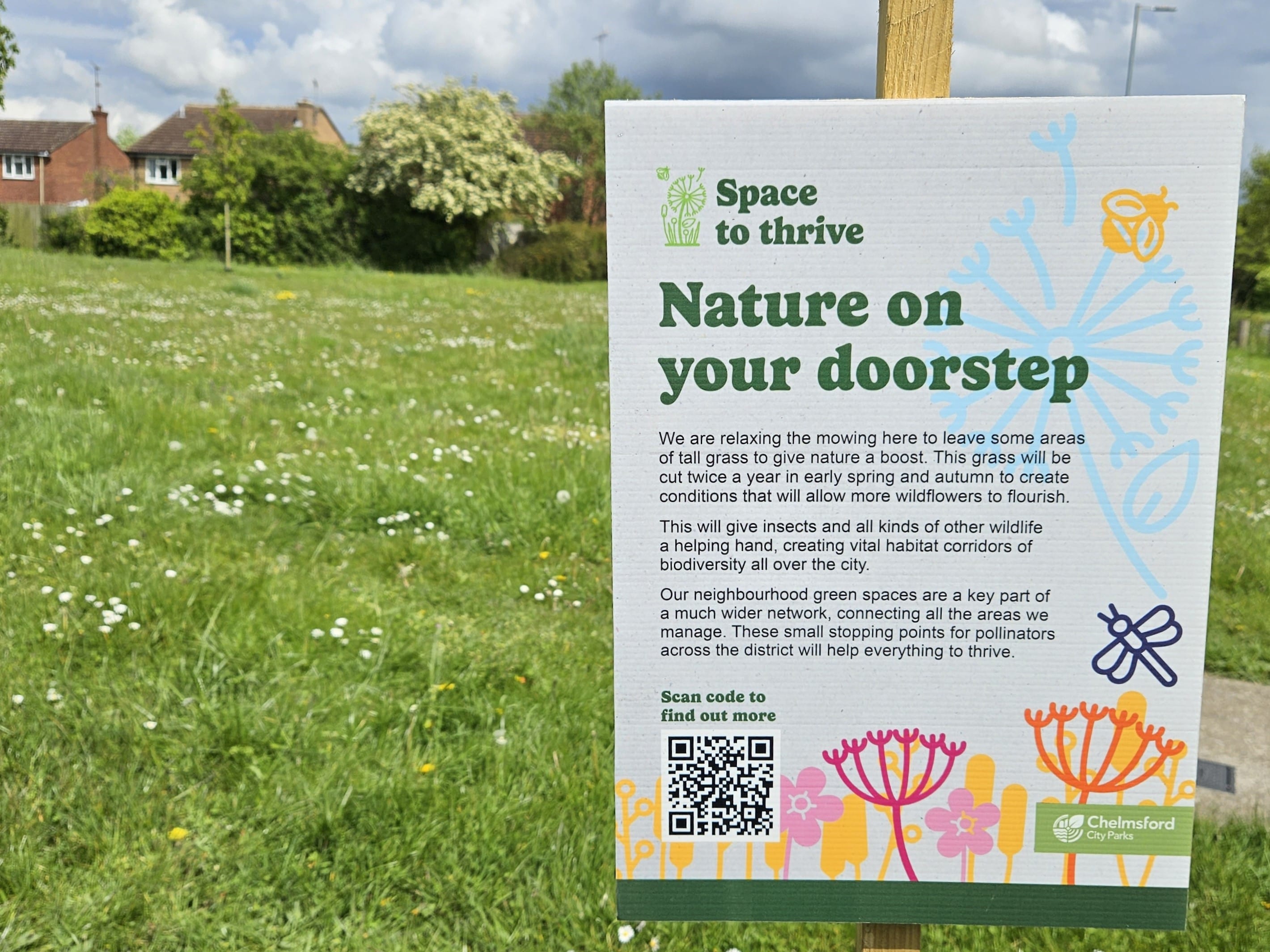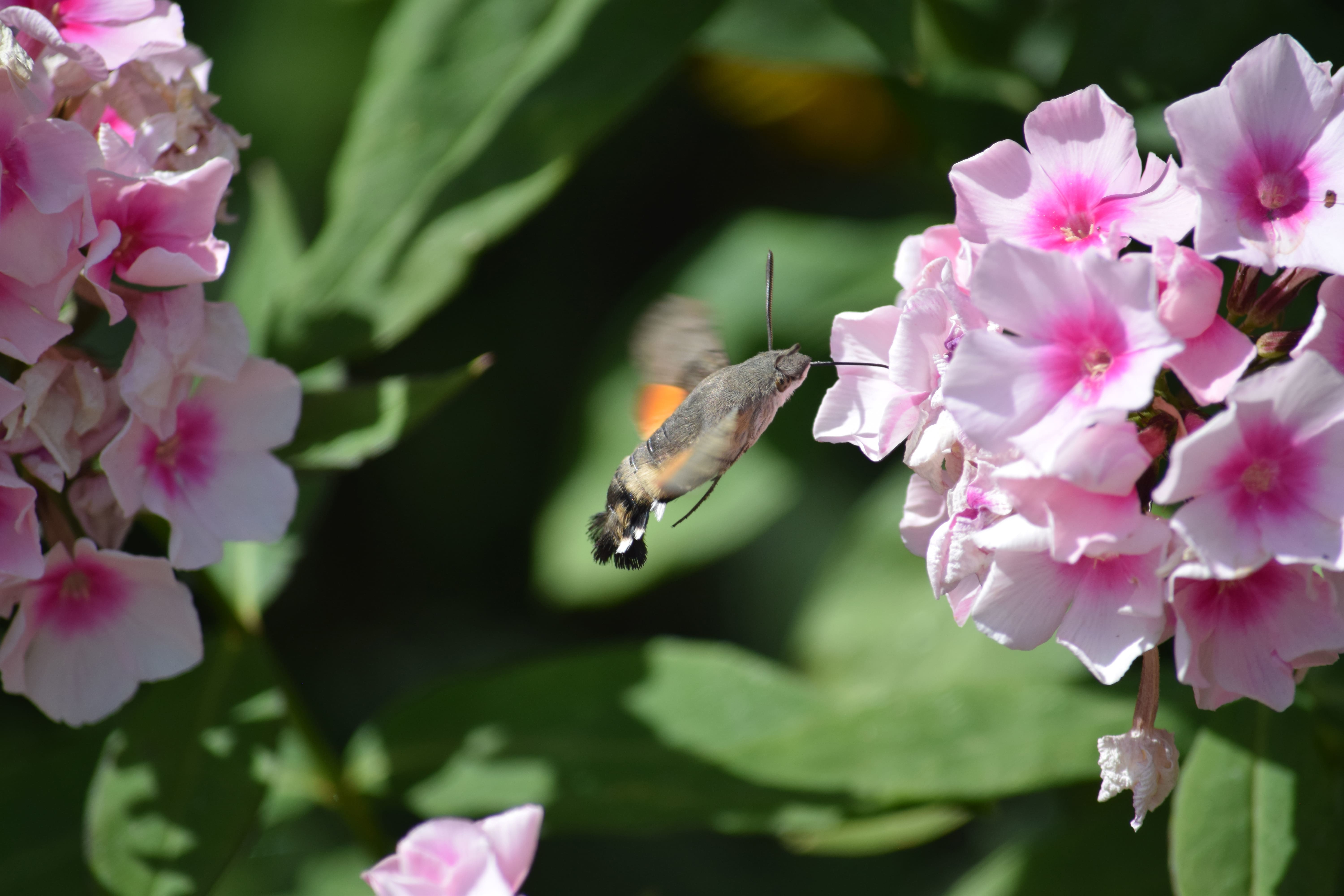Giving nature on our doorsteps space to thrive

The arrival of spring brings longer days and hopefully some brighter weather for us to get outdoors. Chelmsford’s parks and green spaces are coming into bloom across the district to provide colourful and nurturing spaces for all of Chelmsford’s residents to enjoy – including residents with more than two legs!
Providing a space for nature to thrive
It’s no secret that closely cropped grass reduces biodiversity. In Chelmsford, we want to increase the number of pollinators by creating more wildlife-friendly areas and giving nature space to thrive. This will help protect the food supply for humans.
Just like previous years, over the coming months, you will see parts of the 1,700 acres of grassland managed by Chelmsford City Council cut less frequently, from larger areas like parks, right through to smaller green corridors and roadside verges.
Taking action against the Climate and Ecological Emergency
When Chelmsford City Council declared a Climate and Ecological Emergency in July 2019, it put nature conservation and fighting climate change at the heart of what it does. 'Space to Thrive' is an initiative, led by the council’s parks team, to help combat the climate emergency. It’s all about how the council is taking action, what we are actively doing every day out on the ground, and what we can do to inspire others to make a difference too.
For many years, grass has been cut regularly, and many of us have come to expect a ‘neat and tidy’ landscape. But we now realise that disrupting, fragmenting and destroying habitats has a cost to humans, and so we need to play our part in restoring them. We have great potential to transform and enrich our local environment.
All the places the city council has chosen to mow less frequently, however big or small, cover routes travelled by insects and other creatures. These highways are crucial in supporting bees and butterflies travelling from one area to another. There are nesting birds and bats looking for hundreds of insects every day to feed their young. There are small mammals such as hedgehogs travelling large distances each day and needing to find sources of food along the way. Insects also play a key role in ensuring UK food security, and declining numbers of insects will impact the food that we eat.

Keeping open spaces for socialising and playing
There are still plenty of open green spaces in Chelmsford for people to enjoy recreationally. We’ll continue to keep grass short in areas of our parks, as well as our sports pitches, where we know children want to play or group activities regularly take place.
The areas we’ve selected to grow should be large enough to provide an environmental benefit without presenting any safety issues for local communities.
Cllr Rose Moore, the council’s Cabinet Member for a Greener and Safer Chelmsford explains about the council's responsibility to restore nature at scale.
““The council's policy is about protecting essential wildlife. It’s about connecting and creating new corridors for the existing habitats we have in Chelmsford.
Cllr Rose Moore, Cabinet Member for a Greener and Safer Chelmsford
“By mowing in a certain way for so many years, we have diminished the populations of insects and not allowed nature to thrive. The City Council has responsibility for a lot of green space and has the opportunity to restore nature at scale.
“Look closely at a tiny triangle of grassland that has been left to grow and to flourish and you’ll see a whole world within. Flowering grasses, clovers and wildflowers, all buzzing with pollinators zig-zagging from one area to the next. Crickets, moths, flies, wasps, butterflies, beetles and bees rely on grassland habitat for shelter and pollinate as they feed. Insects also need connected habitats to reproduce and thrive, which in turn provides food for other members of the food chain. It’s vital that we create more connected spaces for nature, to keep everything in balance.
“It will take time to regenerate species that have been so diminished through decades of a close-mowing regime, but we’re already seeing great results in areas where grassland habitat has been given space to thrive. Our aspiration is for even more colour and variety of native wildflowers to be woven into local landscapes year on year.”
Deciding how spaces will be cared for
The mowing schedule will vary from place to place. Officers from the parks and green spaces team have carefully assessed each area to determine how it will be cared for. We’re a couple of years into this policy now, so we have a better understanding of how we need to maintain the grassland.
The cutting frequency depends on the location, highway sightlines, safety, visibility, practicality, and will adjust based on the weather conditions. For example, verges where lots of people walk will be cut more frequently than rarely visited areas. If tall grasses could become hazardous to traffic or impede highway sightlines, then they’ll be cut on a more regular basis. Periods of prolonged wet weather will make grass grow more quickly, so the parks team will keep an eye on the conditions and adapt plans as needed. Even in places where grass is cut less often, council staff will still visit and pick litter.
Getting people involved
The Space to Thrive initiative aims to showcase what great things the council’s parks team is doing every day to help pollinators and encourage biodiversity. As well as their day-to-day activities, over the past year the team has worked with volunteers, schools, and residents to help spread the message that wildlife and nature is on our doorsteps and reminding us that we can all play our part to help it flourish.
Earlier this year, students from Newlands Spring Primary School teamed up with the city council’s parks team to plant over 20 species of wildflowers at Copperfield Road Play Area. The project got young people caring about their local environment, as well as bringing more nature into a green space nearby to their school. Involving a younger generation in this kind of exercise helps them see the bigger picture of the nature around them and encourages them to show respect and continued care for the spaces they have helped nurture and develop.
Last December saw our first tree giveaway project with 1,000 young trees claimed by residents to plant in their own gardens or outdoor spaces. The response from all that came to collect a tree was resoundingly positive. It gave people the opportunity to plant more trees across Chelmsford; providing more habitats for insects and wildlife and creating new nature corridors for the wildlife that lives here too.
More information
If you’d like to find out more about Space to Thrive or have questions about the grassland management policy, a comprehensive list of Frequently Asked Questions can be found on the council’s websites. We’ll share more about our Space to Thrive projects as they happen throughout the year.


![Butterfly (18 Apr 24) (1) [Cropped]](/media/sp1dgnzv/butterfly-18-apr-24-1-cropped.jpg?rmode=max&v=1daa0727e0629e0)








